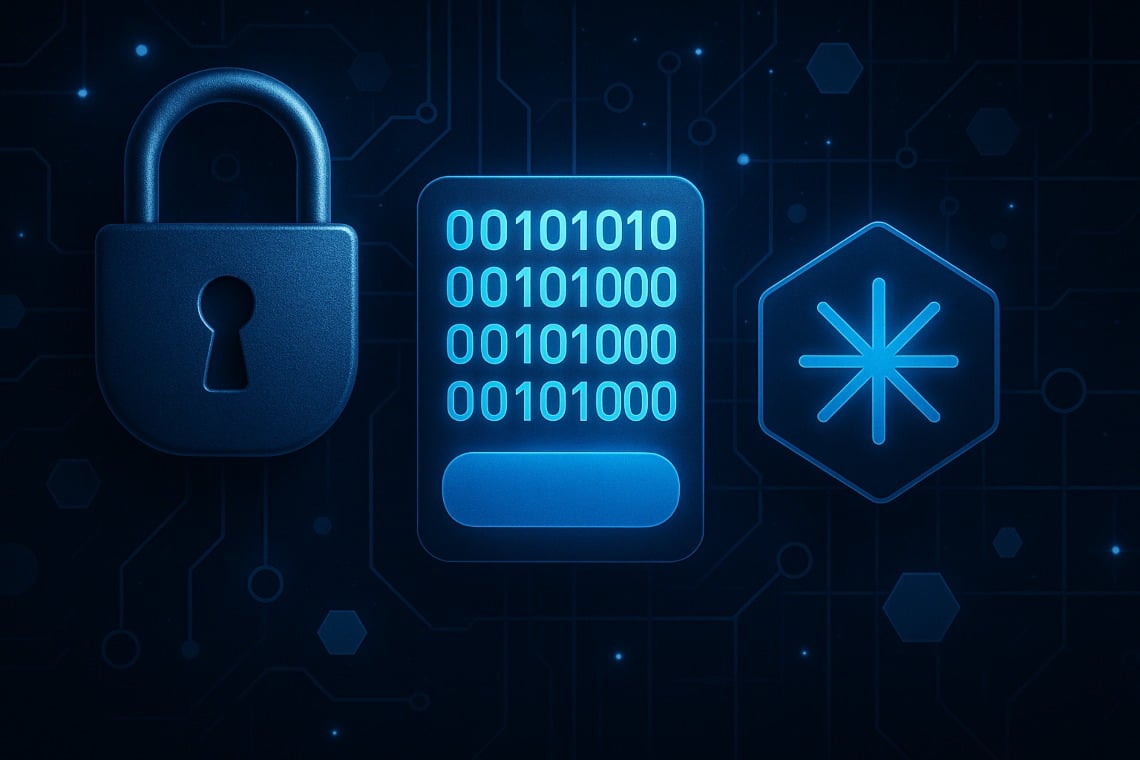In the landscape of cybersecurity, the term nonce represents a crucial element for ensuring the integrity and confidentiality of digital communications. Derived from the English expression “number used once,” the nonce is a random number used only once in a specific cryptographic context. Its main function is to prevent replay attacks, which are malicious attempts to intercept and retransmit valid messages to deceive security systems.
In the technical field, a nonce is often a four-byte number that is added to an encrypted or hashed block, as occurs in the blockchain. This number is modified until the hash result meets certain difficulty criteria, making the manipulation process extremely complex for potential attackers.
The distinctive characteristics of the Nonce in cryptography
An effective nonce can include a timestamp, making it valid only for a specific time interval. Alternatively, it can be generated with a sufficient number of random bits to minimize the possibility of duplication. According to the definition of the NIST (National Institute of Standards and Technology), a nonce is a value that varies over time and has a negligible probability of repeating.
- Cryptographic nonce: random or pseudo-random value used only once in a secure communication.
- Random number: number generated without any external influence, fundamental for the creation of robust cryptographic keys.
- Pseudo-random number: number generated by a deterministic algorithm, difficult to predict but not completely random.
- Replay attack: cyber attack in which a valid message is intercepted and retransmitted to deceive the recipient.
Types of Nonce: generation methods
Random Nonce
The random nonce is generated by combining arbitrary numbers, making it unpredictable and therefore very effective against attacks. However, the exclusive use of random numbers does not guarantee absolute uniqueness, leaving open a small possibility of duplication.
Sequential Nonce
The sequential nonce follows a predictable sequence, ensuring that the values do not repeat. This method is efficient in terms of storage space and facilitates verification. However, the predictability can represent a vulnerability if an attacker manages to identify the pattern.
Hybrid Nonce
The combination of random and sequential elements represents the most balanced approach. For example, a timestamp like “3:01 p.m. 9/17/2020” can serve as a sequential nonce, while adding a pseudo-random number increases its unpredictability. PRNG (Pseudo-Random Number Generators) are often used to generate these values, while maintaining a small risk of duplication.
Applications of Nonce in Digital Security
“`html
Authentication
“`
In the context of authentication protocols, such as HTTP Digest Access Authentication, a nonce is used to calculate the MD5 digest of the password. Each authentication request receives a different nonce, preventing old communications from being reused. This is particularly useful in the e-commerce sector, where each order can be associated with a unique nonce to prevent fraud.
Asymmetric Cryptography
During the handshake SSL/TLS, both the client and the server generate and exchange unique nonces. These values are then verified through their respective public and private keys, ensuring the security of the connection.
Digital Signatures
The firme elettroniche use nonces to create, compare, and verify digital signatures. This process ensures that each signature is unique and cannot be reused.
Identity Management
Features such as Single Sign-On (SSO), two-factor authentication (2FA), and account recovery utilize nonces to securely verify user identities.
Hashing and Blockchain
In Proof-of-Work (PoW), a nonce is used to generate a hash that meets specific difficulty criteria. This process is the basis of cryptocurrency mining like Bitcoin. Miners continuously modify the nonce until they find a valid hash, making the system resistant to manipulation.
“`html
Initialization
“`
An Initialization Vector (IV) is a type of nonce used in data encryption systems. This value, random or pseudo-random, is used only once per session, enhancing overall security.
The Advantages of Using Nonce
Originality of Communications
The introduction of a nonce makes each message unique, preventing an attacker from simply copying and pasting previous communications.
Prevention of Replay Attacks
Even if a message is intercepted, the nonce inside will be different from the original one. The server, therefore, will reject any attempt at reuse.
Greater Security
By reducing the possibility of replay attacks and ensuring the uniqueness of messages, nonces increase the security of digital communications.
Verification of Authenticity
The inclusion of timestamps in the nonce allows applications to verify the legitimacy of the user and prevent impersonation attempts.
The Nonce in the Blockchain: a cryptographic puzzle
In the context of the blockchain, the nonce is a fundamental variable for the mining process. The miners modify the nonce to find a hash that meets certain requirements, such as a predetermined number of leading zeros. This process, based on trial and error, ensures that each block is legitimate and secure.
The nonce acts as a barrier against manipulations. Only by finding the correct nonce can a block be added to the chain, ensuring the integrity and consensus of the system.
Conclusion: a pillar of cryptographic security
The nonce is much more than just a random number. It is an essential element to ensure the security, uniqueness, and integrity of digital communications. Whether it is authentication, digital signatures, blockchain, or identity management, the nonce plays a key role in protecting data from unauthorized access and cyber attacks.
Its ability to make every message unique and verifiable makes it an indispensable tool in the arsenal of modern cybersecurity.
